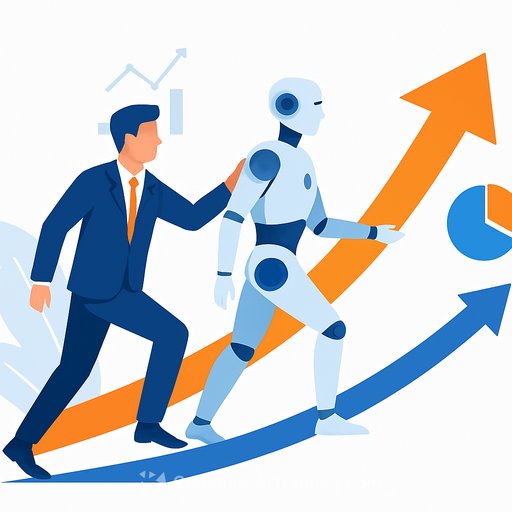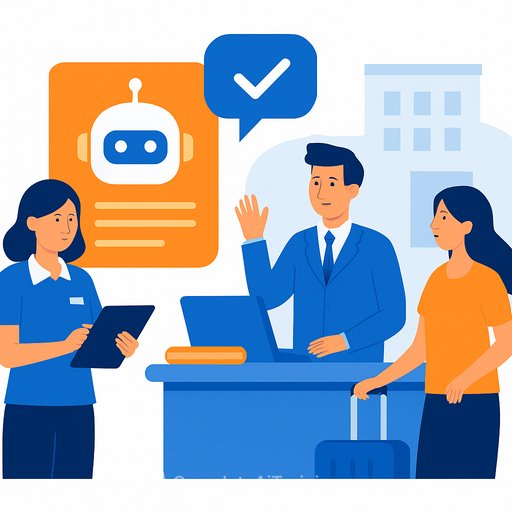Head, Heart-and Hands: What HR Leaders Need Now
Great leaders today don't just think and care - they roll up their sleeves. In the AI age, leadership means learning and doing, not just directing.
For years, the head-heart model worked: strategy plus empowerment. But the pace of change and the rise of AI demand a third pillar. The leaders who win - from Sam Altman to Elon Musk to Mark Zuckerberg - combine head, heart and hands.
The AI Experiment That Fizzled
Consider a familiar story. A company greenlit AI across teams, ran training, bought tools and launched channels full of tips and prompts.
Three months later, the dashboards were flat. On paper, the plans were solid - sandboxes, governance, workflows. In practice, the work didn't move because leaders stayed high-level while teams bolted AI onto old processes.
This isn't rare. Industry research shows adoption is up, yet most organizations still struggle to realize consistent value. See McKinsey's State of AI analysis for context on stalled outcomes and uneven impact across functions.
Why Head + Heart Are Necessary - but Not Sufficient
Strategy still matters. So does empowerment. HR carries both: setting direction and helping people adapt through constant change.
AI breaks the old playbook because it's a meta-technology. It reshapes how work gets done and introduces a knowledge gap where leaders are asked to make calls on systems they haven't used hands-on.
Teams notice when leaders speak in abstractions. Credibility drops when AI projects hiccup and leaders can't troubleshoot with the group. That's where the hands come in.
How AI Rewrites Leadership - and HR's Job
AI evolves quickly and behaves in ways even its creators can't fully predict. That creates new questions for HR: risk, policy, change, capability-building and ethics.
People don't trust "trust the process" unless leaders have walked the process. HR must model what good looks like with AI: practical, specific and grounded in real workflows, not slide decks.
What Hand-First Leadership Looks Like in HR
Prong 1: AI literacy for leadership
Leaders need operational fluency, not just concepts. That includes how different LLMs behave, where data comes from, confidence scoring thresholds and where human checks must live.
For HR, this also means bias mitigation, privacy and compliance, plus clear review protocols so AI helps without eroding trust or quality.
- Prompt patterns that reduce variance and improve repeatability.
- Evaluation rubrics for candidate summaries, job descriptions and performance notes.
- Data handling rules: PII redaction, storage, access controls and audit trails.
- Bias checks on talent recommendations and content output.
- When to add retrieval (RAG) for policy-aware assistants.
- Integrations with ATS/HRIS and where human review must sit.
Prong 2: AI leadership pods (built for HR realities)
Form cross-functional pods so strategy, workflow design, research and implementation move in sync. Keep the cycle tight and the feedback fast.
- Visioneers: Identify business-critical problems worth solving with AI. HR examples: reduce time-to-fill for priority roles, improve internal mobility, cut policy response time.
- Architects: Design human-AI workflows with guardrails. Example: AI drafts job descriptions; recruiters refine; bias checks run; hiring managers approve with a clear checklist.
- Pathfinders: Test new tools and methods. Example: trial sourcing assistants, interview note summarizers and policy chatbots, then stress-test before scaling.
- Creators: Build and integrate. Example: connect AI assistants to your ATS/HRIS, set access controls, monitor performance and maintain secure operations.
Prong 3: Measure what matters and iterate
Skip vanity metrics like "prompts used." Measure outcomes that reflect quality, risk and ROI. Then adjust.
- Amplification ratio: (Time saved on AI-assisted tasks) / (Time invested in review, training and oversight). For example, resume screening that saves 50 hours but takes 5 hours of validation yields a 10:1 ratio - strong and scalable.
- AI-influenced quality delta (AQD): Post-AI quality score minus pre-AI. HR signals: fewer mis-hires at 90 days, better hiring manager ratings, clearer performance notes, improved employee sentiment on comms.
- Innovation yield: (AI ideas tested per quarter) × (Success rate scaled). Avoid endless pilots. Track tests that turn into process upgrades across the org.
- AI fluency score: 360 feedback on whether leaders can guide, troubleshoot and set realistic standards. Teams follow leaders who can sit down and fix a prompt with them.
What Changes When Hands Get Involved
When leaders build real fluency, incentives shift from "more output" to "better outcomes." Quality improves, waste drops and experiments convert into durable wins.
In one implementation, teams saw a 35% drop in production defects, a 28% lift in marketing engagement and Innovation Yield jump from 15% to 65%. Internal NPS for leadership guidance rose 73% - adoption accelerated because trust increased.
Get Started: Pick One HR Workflow
The paradox of AI is simple: to remove friction, you must learn where the friction lives. Start small and real.
Pick one workflow that matters. Spend two weeks getting hands-on with the tools your team will use. Feel the failure modes, tune prompts, set review gates and write the playbook together.
- Good candidates: candidate screening, job description creation, interview note summaries, onboarding guides, policy Q&A assistants, benefits communications.
- Days 1-3: Map the current process, define quality standards, select tools and guardrails.
- Days 4-6: Build the first version, add human checkpoints and test with a small cohort.
- Days 7-10: Measure amplification ratio and AQD; fix failure points; document the workflow.
- Days 11-14: Train the team, launch in production, set monitoring and schedule the next iteration.
As agentic AI and new capabilities arrive, this same hand-first approach will keep your org honest and effective: small bets, fast learning, clear guardrails, measurable gains.
Upskill Your HR Team
If you want a curated path to AI literacy by job role - including HR - review practical courses and tools that align to real workflows.
Explore AI learning paths by job
Bottom line: Head and heart still matter. But in the AI era, hands separate leaders who talk about change from leaders who deliver it.
Your membership also unlocks:






